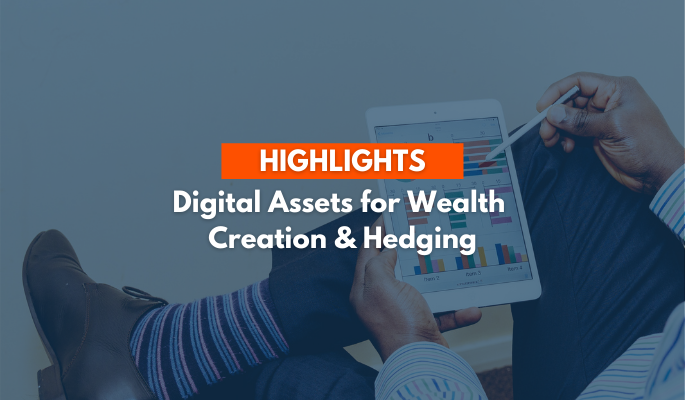
In a recent online interview, Frank Gessner Founding Partner & Chairman of INVAO, encouraged investments in digital assets and shared his insights with Karl Tlais, Founder and Strategic Advisor, iAdvisory.
- Cryptocurrencies are relatively a young asset class and so volatility is normal. The financial landscape is evolving, and maturity takes time. The digital economy is the next logical development of the internet – from exchanging data to value – creating a global monetary network on the internet without central complexities. Governments and central banks will become part of this.
- The digital asset class is the investment opportunity of the decade with expectations of enormous growth. The risks in the global financial systems are getting higher due to the pandemic, fiscal policies of central banks, zero interest rates, etc. This is a good time to be more diversified in your portfolio management and go into both digital and traditional assets. There is a likelihood that if the traditional financial systems crash then the digital assets will behave differently. From a classic hedging perspective, all wealth managers encourage approximate 10% of your total wealth and 30% of your liquidity to be in digital assets. Even large public listed companies are moving into the digital asset class as a hedging strategy.
- Decentralised or cryptocurrencies will not replace the centralised, fiat money but we will see a coexistence of both. You will have both in your smart wallets, with the same regulations, and payment providers. And there will be greater efficiencies in networks and better discipline in central banks due to the increased competition with both the centralised and decentralised finance sectors.
- With cross-border payment transactions being challenging, expensive and taking too long digital assets play a much-needed role.
- Though mining certain cryptocurrencies does consume a lot of energy, a large part of this is now from the renewable energy sector. The location related challenge with renewable energy is not a barrier for mining cryptocurrencies because the machine can be placed wherever needed, which will in-turn push for more renewables.
- Though China and India seem reluctant to promote cryptocurrencies at present, they have already indicated that they will be part of the digital economy ecosystem, and even become global leaders once they have framed their regulations satisfactorily.
- Global and local regulation is good for everyone; markets will stabilise, and it helps everyone feel safe, enabling more trust in the evolution of decentralised finance.

